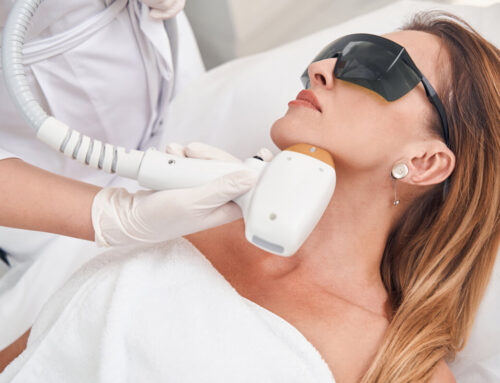Although they may appear (and even feel) identical, dryness and dehydration are two completely different conditions. Understanding the difference between them is important so you know what is the correct approach to take good care of your skin. In this article, you will learn to discover the differences between dry and dehydrated skin and how to treat each of them.
What is a Dry Skin?
The outer skin layer is dry and lacking in oil. Sebum is the natural oil of the skin, and it is produced less by dry skin types than by oilier skin types. However, the skin needs a healthy balance of sebum to perform well. Oil helps the skin hold onto moisture and keep it silky and smooth, and lack of oil production causes the skin to lose its ability to retain moisture, which leads to dry skin. Without a thick enough layer of protective oils, the skin barrier is more prone to discomfort and dryness.
Symptoms of dry skin include:
- Itchy skin
- Rough skin
- Redness
- Wrinkling
- Thin, delicate skin
Inflammatory skin conditions like atopic dermatitis (eczema), characterized by redness, cracking, and inflammation, are also more common in those with dry skin.
What is a Dehydrated Skin?
Dehydrated skin is actually much more prevalent than dry skin. A dehydrated skin is a skin that is water-deficient. It is a temporary skin ailment that can affect all skin types and happens when your skin has low water content and is moisture-deficient. The good news is that dehydrated skin may be treated much more quickly than dry skin. Lack of water on the stratum corneum, the outermost layer of your skin, causes an excess of oil to be produced to replace the lost water, which causes your skin to become dehydrated. Nevertheless, because the skin’s natural oils are important in preventing water loss and retaining moisture, those with dry skin types are also prone to have dehydrated skin.
Symptoms of dehydrated skin include:
- Redness
- Congestion
- Having a glossy, greasy complexion
- Inflammation
- More visible fine lines and wrinkles
Dehydration is caused by lifestyle choices like smoking, drinking too much alcohol, not drinking enough water, and environmental factors like weather.
What Causes Dry Skin?
As was previously said, dry skin is caused by a lack of skin oil. Although genetically based, this can worsen due to internal and external factors. Extreme temperatures might make dryness worse. Also, harsh skincare products can cause dry skin due to excessive oil removal. Medical disorders, lifestyle choices, hormones, and the natural aging process are some other factors that could cause dryness. Restoring the skin’s surface lipids and limiting exposure to environmental factors like hot water is necessary for managing dry skin. You can achieve this using moisturizer, especially emollients and occlusives (which often contain oils to smooth and soften the skin), thereby creating a barrier to prevent water loss.
What Causes Dehydrated Skin?
Dehydrated skin is caused by excess water loss. This might result from a compromised skin barrier, a diet lacking in fluids, or severe weather conditions (cold, arid climates, in particular, are associated with dehydration). Lack of skin elasticity is one of the most prevalent indicators of dehydration – you will see more obvious fine lines and wrinkles. The skin may also look dull or start to sag. A hydrating skincare product is used to reduce the appearance of skin conditions, such as fine lines or wrinkles associated with dehydration.
How Can Dry Skin Be Repaired?
- Use a skincare regimen designed specifically for dry skin. This should contain mild yet efficient exfoliants to remove dry skin cells that can cause a harsh texture.
- Apply a moisturizer: pick the best facial oil or moisturizer. It must have the ideal ratio of protectants and emollients to form a barrier that stops moisture loss.
- Use a gentle exfoliant: steer clear of abrasive scrubs that include sugar or beads. Instead, choose a mild exfoliator to remove flaky skin and dead skin cells with care.
- Apply a serum before your moisturizer. A moisturizing serum can offer an extra layer of hydration to the skin before your moisturizer.
- Use a humidifier to keep your skin and the air moist. If you don’t want to buy a humidifier, keep a water basin in your bedroom at night.
- Mix a facial oil with your moisturizer at night. This aids in keeping skin moisture in.
How Can Dehydrated Skin Be Repaired?
You must address your skincare routine and general health to treat dehydrated skin. This entails both hydrating internally and topically.
1 – Use a mild cleaner and lukewarm water:
Choose cleansers devoid of harsh chemical ingredients and synthetic perfumes that can dehydrate the skin and exacerbate sensitivity.
2 – Use a moisturizing cream:
A moisturizer is one skincare product you shouldn’t overlook, especially if your skin is dehydrated. In addition to replenishing moisture and maximizing hydration, it shields skin from the dehydrating effects of external stresses.
3 – Use a hyaluronic acid serum:
Rehydrating skin that has lost moisture is an excellent benefit of hyaluronic acid. This wonder substance helps bind and hold moisture as a humectant, keeping skin pillowy and soft. Hyaluronic acid can store up to six liters of water. It acts as a magnet for moisture and aids cell retention to make your skin feel and look hydrated, plump, and healthy.
4 – Make use of a soft exfoliant:
Avoid strong scrubs that contain beads or sugar. Instead, choose a mild exfoliator to remove flaky skin and dead skin cells with care.
5 – Guard your skin’s surface layer:
Drinking water throughout the day benefits your health, but this hydration doesn’t reach your skin unless you’re severely dehydrated. The secret is to keep your skin’s moisture barrier strong and healthy to stop water from leaving your body.
Conclusion
Thinking that you might have dry or dehydrated skin? Schedule a consultation with us at Eye Candy Vision and Beauty Clinic, Arcadia, today to discuss your skin concerns.
MEDICAL ADVICE DISCLAIMER: All content in this blog and description including: information, opinions, content, references and links is for informational purposes only. The Author does not provide any medical advice on the Site. Accessing, viewing, reading or otherwise using this content does NOT create a physician-patient relationship between you and its’ author. Providing personal or medical information to the Principal author does not create a physician-patient rela-tionship between you and the Principal author or authors. Nothing contained in this blog or it’s description is intended to establish a physician-patient relationship, to replace the services of a trained physician or health care professional, or otherwise to be a substitute for professional medical advice, diagnosis, or treatment. You should consult a licensed physician or appropriately-credentialed health care worker in your community in all matters relating to your health.






